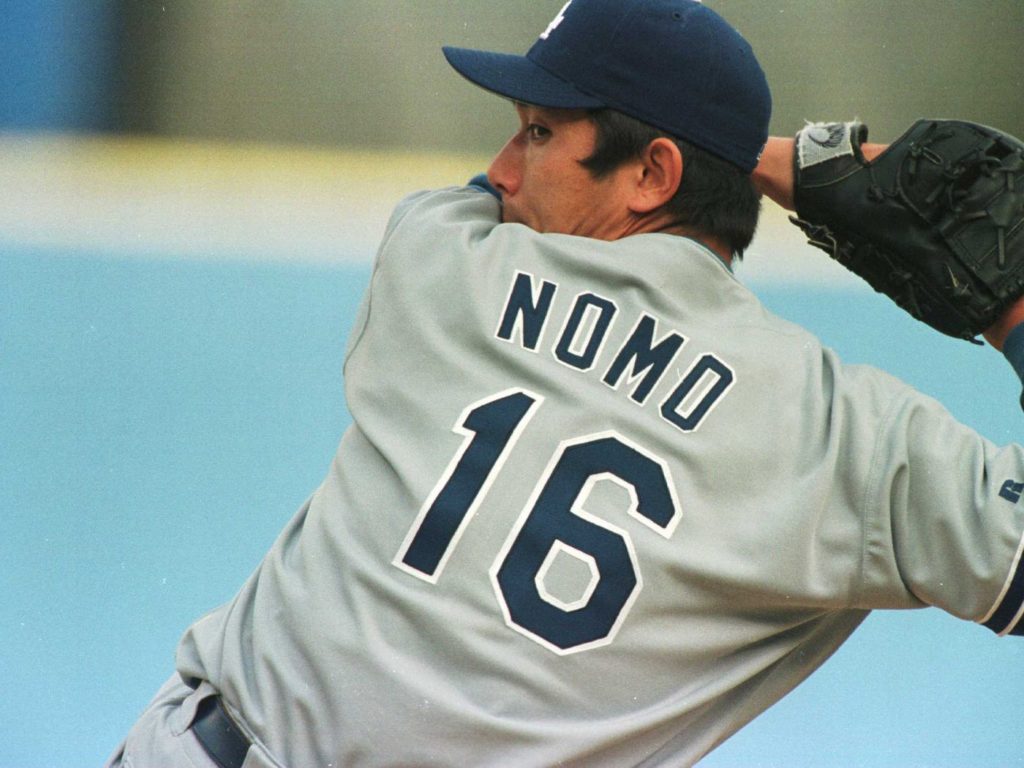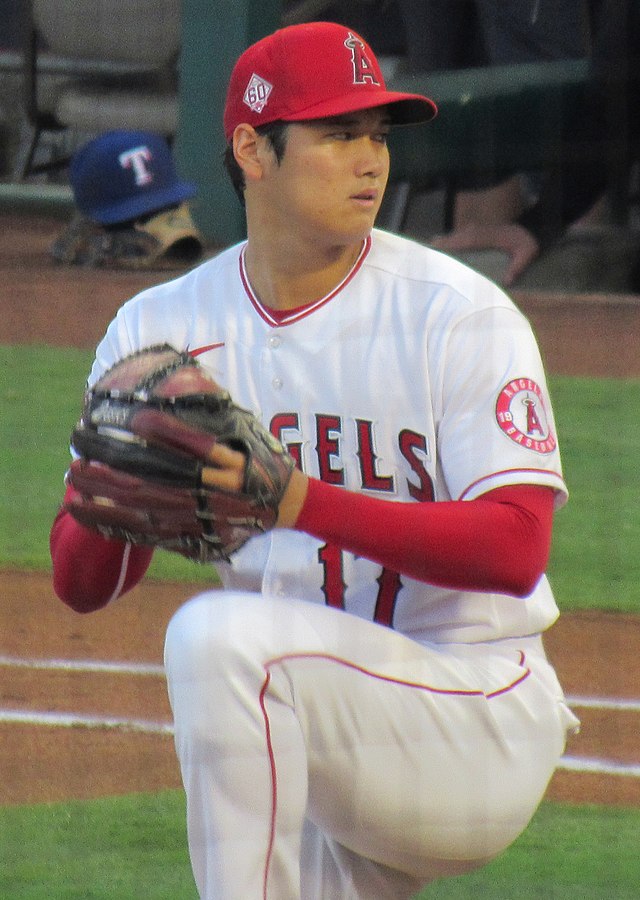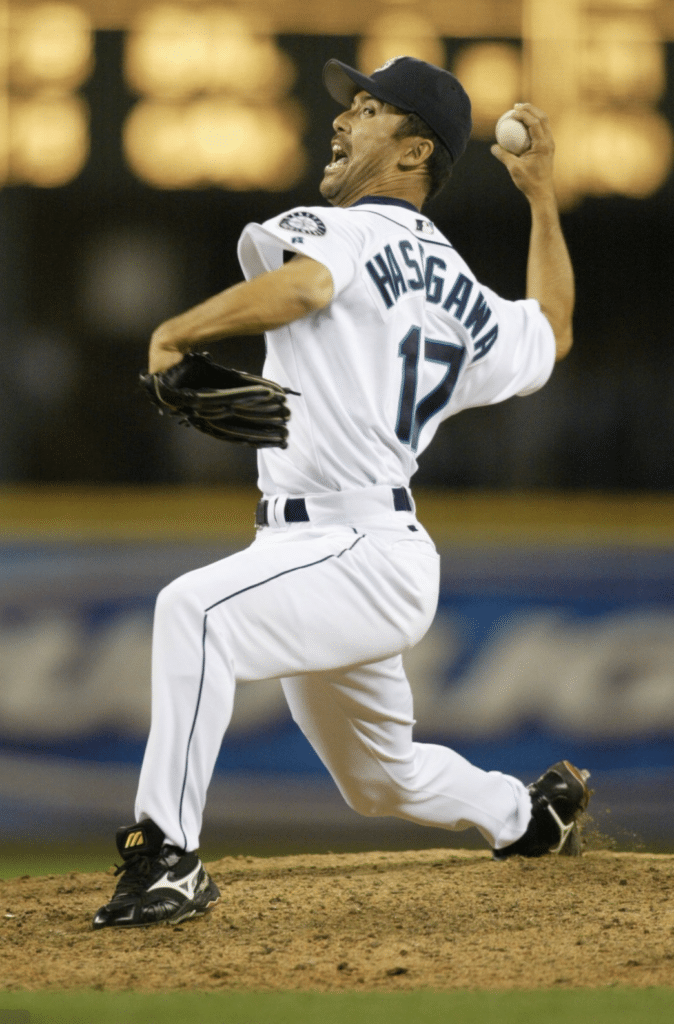
Major League Baseball (MLB) is filled to the brim with fantastic international talent, whether from Venezuela, Cuba, South Korea or, of course, Japan. With Kenta Maeda and Yu Darvish having absolutely phenomenal seasons in the shortened 2020 campaign, it was further evidenced that the Japanese pitcher has certainly found its place in the American game, as both players posted stats great enough to get the Cy Young voters’ attention.
Of course, there are countless other seasons that deserve recognition for their efforts. Although a Japanese player has never won the Cy Young award, there have been many that came close, or achieved other honors for their work. With this list, we will discuss some of these seasons, what they accomplished in that span and why they were noteworthy.
Here’s the windup, and the pitch…
Yu Darvish, 2013 (Texas Rangers)

In only his second season in MLB, Yu Darvish put on a show of efficiency and baffling “stuff” that showed the league’s hitters just how ruthless he was. He led the American League in strikeouts (277), strikeouts per nine innings (11.9) and hits per nine innings (6.2). He was fourth in the AL in both ERA (2.83) and WHIP (1.073), and won 13 games for the Texas Rangers; to go by stats alone, however, does not do this dominance justice.
In his very first start of the season, Darvish pitched a perfect game through 8 ⅔ innings against the Astros. By Memorial Day, he had already recorded 100 strikeouts, a feat last achieved by Curt Schilling and Randy Johnson for the Arizona Diamondbacks in ‘02. He was named an MLB All-Star, and was runner-up for the AL Cy Young Award, which he would have likely won if not for a brief stint on the Disabled List and Max Scherzer’s 21-win season for the Tigers.
It remains the highest a Japanese pitcher has finished in Cy Young voting; for that alone, he sits high on our list.
Hideo Nomo, 1995 (Los Angeles Dodgers)

The man, the myth, the maverick: Hideo Nomo. If you’re reading this article, chances are you’re familiar with his story and his electrifying first season with the Dodgers. Of course, it never hurts to be safe.
After signing with the Dodgers in 1995, Nomo was a strikeout machine in his rookie campaign, leading all of MLB with 236 Ks, and broke a Dodgers’ franchise record with a strikeout rate of 11.01 batters per 9 innings.
Of course, there’s also the cultural aspect to consider: Nomo was a phenomenon in both the States and Japan, as he was the second Japanese-born player to ever play in the States and the first in 30 years (Masanori Murakami pitched for the San Francisco Giants in 1964 and 1965). With the eyes of two countries on him, he “tornadoed” his way to being the All-Star Game for the National League and the Rookie of the Year Award, showing American baseball fans, players, and executives the amount of talent Japan could offer.
With both sheer talent and international superstar status on his side, it’s hard not to rank this high.
Koji Uehara, 2013 (Boston Red Sox)

In my honest, unbiased opinion: Koji Uehara does not get talked about enough. He was one of the most dominant relief pitchers the world has ever seen, with a career that never seemed to fizzle out; he was named an NPB All-Star in both 2007 and 2018!
It’s his 2013 campaign with the Boston Red Sox, however, that’s not just one of the best for a Japanese pitcher, but as a relief pitcher altogether. He and his devastating split-fingered fastball were almost untouchable, notching a 1.09 ERA and 101 strikeouts in 74.1 innings pitched, and his 0.74 WHIP (walks plus hits per inning pitched) set an MLB record for a pitcher with over 50 innings pitched. He retired 37 straight batters between July 9 and September 17, coming within four of Bobby Jenks’s MLB record. For his efforts, he finished 7th in Cy Young voting and even got an MVP vote. But it didn’t stop there.
Uehara pitched one of the most dominant postseasons ever seen: he tied the record for most saves in a postseason with seven, was named ALCS MVP with nine strikeouts over 5.1 innings pitched, and threw the final pitch to clinch both the pennant and the Series. He was a hero in Boston, with David Ortiz even lifting him over his shoulders off the field to celebrate.
He’d later be named an All-Star in 2014, but nothing will ever touch his 2013 season… or his splitter.
Shohei Ohtani, 2021 (Los Angeles Angels)

There’s already been plenty written about Ohtani’s 2021 campaign, as it was something never-before-seen in the modern era. He lived every kid’s dream: pitching, batting, stealing bases, and more. He did it all, and was well-rewarded for it, winning the American League MVP in a unanimous vote, becoming the first player ever to start the All-Star Game as both a batter and a pitcher, and even having his 2021 campaign being named “the greatest season in sports history” by The Sporting News.
But we’re here to talk about the best pitching seasons, so let’s focus on that. On top of his incredible production at the plate, Ohtani still managed to be one of the best pitchers in the league and most reliable starts on an oft-injured Angels staff. He posted a 9-2 record while often working under a pitch limit, due to his hitting workload on pitching “off”-days.
Although the length of his outings were limited, there’s no doubt that he was still a demon to face in the batter’s box, mixing a devastating splitter with a fastball that he could hurl upwards of 100 miles per hour. The result? An average of 10.8 strikeouts per nine innings.
Ohtani was especially stellar at home, where his 6-0 record made him just the sixth pitcher in MLB history to start at least 13 games and without a losing decision. Overall, he posted a 3.18 ERA – comparable to stars like Gerrit Cole (3.23) and Lance McCullers (3.16) – and served as one of the more reliable starters on a very-injured Angels’ staff, starting 23 games overall.
Hisashi Iwakuma, 2013 (Seattle Mariners)

Unless you’re a major fan of Japanese baseball or a Mariners fan, chances are you might have forgotten about Iwakuma. But in 2013, with Darvish and Uehara taking up headlines of their own, Iwakuma shined at Safeco Field, putting up impressive stats in almost every category.
He was a model of consistency and dominance, finishing third in the AL in ERA with 2.66, third in innings pitched with 219.2, second in WHIP with 1.00, and first in WAR. He was named an All-Star, and finished third in AL Cy Young voting behind Scherzer and his compatriot Darvish. His real knack, however, was simply winning games: he was 16-4 during the campaign, a remarkable feat considering that the Mariners finished with a .438 winning percentage and 25 games out of first place in the AL West!.
Why does this season often get overlooked? To be honest, it’s probably due to a lack of flash and playing on a non-contender. Iwakuma is a ground-ball pitcher, so he doesn’t have the zing of Darvish or Nomo, and a lack of a postseason in long-suffering Seattle will also limit his appeal. For his skills, however, this season cannot be ignored; it’s on our list for a reason!
Takashi Saito, 2007 (Los Angeles Dodgers)

Picture this: in 2006, the Dodgers signed an unheralded 36-year-old pitcher who appeared to be on the tail end of his career in Japan to a minor league deal to give him a chance to sometimes appear out of the bullpen. In 2007, he had not only taken over the closer role from fan-favorite Eric Gagne, but also set a new velocity record for Japanese pitchers and became one of the scariest pitchers to face late in a game. This is Takashi Saito’s story.
Although he notched 24 saves in 2006, we’re choosing his 2007 campaign for the accolades and skills he showed off. In just 64 innings of work, he recorded 39 saves and struck out 78 batters, to the tune of a career-best 1.40 ERA. He was an All-Star, named closer of the month for August, and was a finalist for DHL’s Delivery Man of the Year. And on June 26, 2007 he threw a 99 MPH fastball, considered to be a record for Japanese-born players at the time.
He’d never return to form after that, but for a shining moment in 2007, Los Angeles was buoyed by an old sophomore pitcher who threw fire. Not much can compare to that.
Hideo Nomo, 2001 (Boston Red Sox)
Although he’s best known for his time with the Dodgers, Nomo had a couple more bright spots in MLB post-1995. One of them was his 2001 campaign with the Boston Red Sox, where he showed he still had strikeout prowess and a flair for the dramatic.
On April 4, 2001, his very first start with the Sox, Nomo gave his team something to celebrate when he threw a no-hitter against the Baltimore Orioles at Camden Yards; it remains the earliest no-hitter in MLB history. Although he posted a pedestrian 13-10 record and led the league in walks, he also led the AL in strikeouts with 220 and strikeout rate, with a solid 10 per 9 innings pitched.
It would be enough for the 33-year-old Nomo to earn a nice two-year contract to return to the Dodgers the following season.
Kazuhiro Sasaki, 2000, 2001, 2002 (Seattle Mariners)
A year before Ichiro came to Seattle and turned MLB upside down, the Mariners featured another Japanese star that brought a bullpen back to life.
You may have noticed how we couldn’t pick just one season, and there’s a reason: Sasaki was a pure model of consistency in the closer role for the Mariners, saving 37 games in 2000 and 2002 and a whopping 45 in 2001; he won Rookie of the Year in 2000 and was named an All-Star in 2001 and 2002. He was a legend with the Mariners, stifling hitters with a split-fingered fastball appropriately called “The Fang” by local media.
Buoying an otherwise terrible bullpen, Sasaki became a critical part of the Mariners’ golden years and a legendary closer in Seattle. And just for fun? He’s also part of a select list of pitchers to strike out four players in one inning. Don’t ask.
Masahiro Tanaka, 2014 (New York Yankees)

Here’s another on a list of legendary rookie campaigns. Although his season was shortened by injury, for a few months in 2014, Tanaka was King of New York.
Let’s break down the stats. Over his first fourteen starts, he was 11-1 with a 1.99 ERA and 113 strikeouts. He was one of two rookie Yankee pitchers to be named to the All-Star game in 67 years (the other was the “the Naugatuck Nugget,” Frank “Spec” Shea, who started and earned the win at the 1947 All-Star Game at Wrigley Field). Tanaka was almost untouchable, until injuries and workload caught up with him and he suffered elbow inflammation. In a limited display, he would finish with 20 starts, a 2.77 ERA and a 13-5 record.
Tanaka remains an important part of the Yankees’ pitching staff, and was even named an All-Star again in 2019, but nothing will compare to the first half of 2014, when the Bleacher Bums were crooning his name along with “New York, New York.”
Shigetoshi Hasegawa, 2003 (Seattle Mariners)

When Kaz Sasaki went down with an injury in 2003, it almost spelled complete disaster for the Mariners. Emphasis on “almost,” as his fellow countryman took over the role and picked up exactly where he left off.
“Shiggy” and Sasaki were a dynamic duo, with the former setting them up and the latter knocking them down. Hasegawa was named an All-Star for his work as the setup pitcher, and when Sasaki went down with injury towards the end of the year, Hasegawa went on a tear, converting on 16 of 17 saves. For the season, he posted a stellar 1.48 ERA over 73 innings.
Despite being the first player to follow Hideo Nomo from NPB to MLB and having a very productive career, Hasegawa never received the star status that other Japanese standouts did. Perhaps this is because Nomo was such a phenom and, being a middle reliever, Hasegawa didn’t record flashy statistics. He was a big part of the Angels bullpen that was anchored by legendary closer Troy Percival and then the Mariners ‘pen anchored by Sasaki. He might just be a quick flash in the pan for most fans, but he was nearly untouchable in 2003 when finally given the chance to close games, playing half of a dynamic Japanese pitching duo that fans wouldn’t see the likes of again for four years…
Daisuke Matsuzaka and Hideki Okajima, 2007 (Boston Red Sox)


This duo was truly one of the coolest to experience. In 2007, two rookie Japanese pitchers came to the Red Sox and took a veteran, championship pitching staff by storm.
First, the starter: in his rookie campaign at age 26, Matsuzaka earned 15 wins and struck out a Red Sox rookie record 201 batters (6th in the AL), enough to earn him fourth place in AL Rookie of the Year voting (despite leading all AL rookies in WAR, even his rookie teammate that won the award, Dustin Pedroia). During the postseason, “Dice-K” became the first Japanese pitcher to win a playoff game when he won Game 7 of the ALCS against the Cleveland Indians, as well as the first to start and win a World Series game in Game 3 against the Colorado Rockies.
Following him, of course, was the 31-year-old rookie reliever: Okajima lived in a relative shadow compared to the ace, as most of the media shined a light on Matsuzaka’s exploits, but his performance cannot be forgotten. He was dominant straight out of the gate, going scoreless from April into May and being named Rookie of the Month in April. He was named an All-Star, and ended the season with a 2.22 ERA over 66 games. He would later become the first Japanese player to play in the World Series when he appeared in Game 2, pitching 2.1 perfect innings.
Boston loved them, and they were stars; a unique duo like this hasn’t been seen since, but their contributions to a championship team cannot be forgotten.
Yu Darvish (Chicago Cubs) and Kenta Maeda (Minnesota Twins), 2020
Although the 2020 season was only 60 games long, it featured some of the best pitching from Japanese starters MLB has ever seen.
Darvish was absolutely dominant for the Chicago Cubs in 2020, becoming the first Japanese pitcher to lead the National League in wins, with eight in 12 starts, and posting a dominant ERA of 2.01; only Trevor Bauer of the Reds did better. Darvish’s stuff was almost untouchable, as he struck out 93 batters, good for third in the NL, for a SO/9 rate of 11; he was first in Wins Above Replacement among NL pitchers too (according to FanGraphs). It will be a tight vote for the 2020 NL Cy Young – might Darvish be the first Japanese pitcher to win the award?
In the other league, Kenta Maeda displayed some of the best stuff the Minnesota Twins have ever seen, leading the AL with a microscopic 0.75 WHIP. After a few years of having to fight for a spot in the Dodgers starting rotation, the Twins showed their faith in him as a starter in 2020 and he delivered: six wins and just one loss over 11 games started. The effort was enough to get AL Cy Young voters to notice him, although he will only finish in second place at best, due to the Indians’ Shane Bieber’s historically dominant 12 starts.
It was short, but sweet: for 60 exciting games, two nifty Japanese pitchers with arsenals of nasty stuff shone on the mound.
Do you agree with our list? If not, leave us a comment telling us what your favorite pitching performance by a Japanese player was! If you’d like to read more about different Japanese players, check out our breakdowns of Japanese players in MLB this season, or our recap of Yu Darvish’s legendary 2020 campaign!




